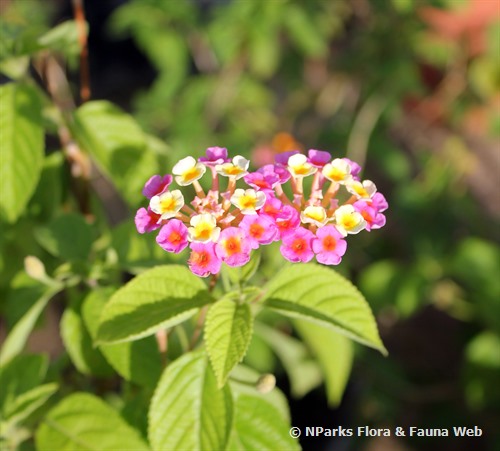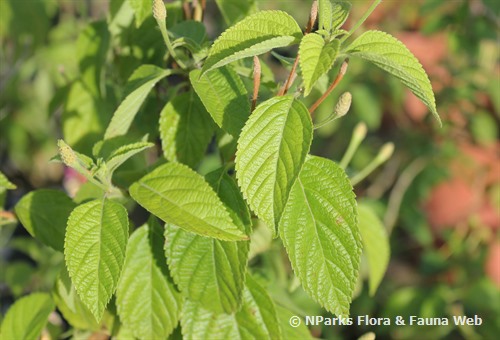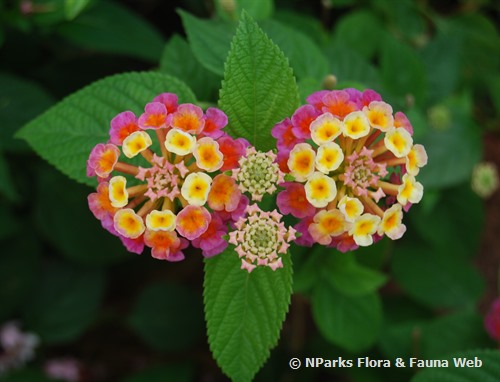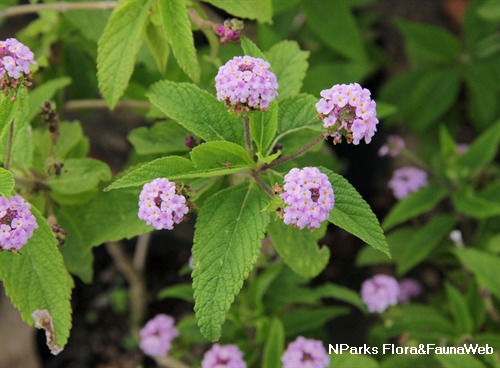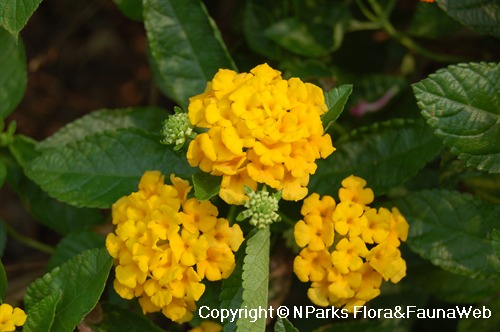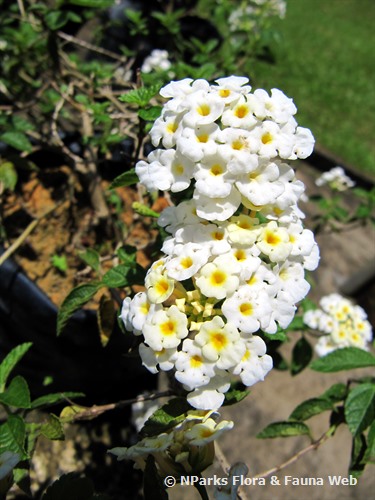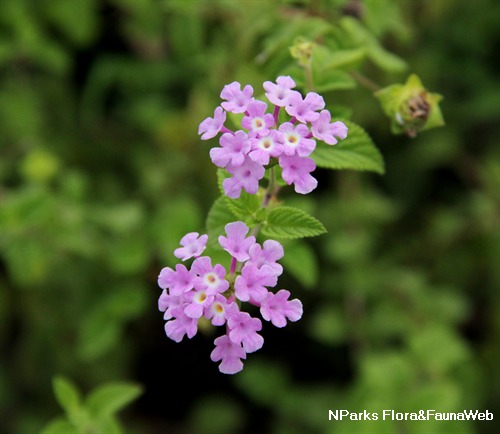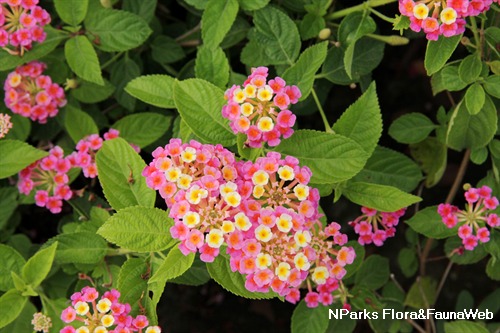
Name
Classifications and Characteristics
| Plant Division | Angiosperms (Flowering Seed Plants) |
|---|---|
| Plant Growth Form | Shrub |
| Lifespan (in Singapore) | Perennial |
| Mode of Nutrition | Autotrophic |
| Plant Shape | Irregular |
Biogeography
| Native Habitat | Terrestrial |
|---|---|
| Preferred Climate Zone | Tropical, Sub-Tropical / Monsoonal |
Description and Ethnobotany
| Growth Form | An evergreen multi-branched shrub that grows up to 1.2 m tall. |
|---|---|
| Foliage | Opposite leaves are narrowly ovate with serrated leaf margin. Leaf blade green mature, apex acute and rounded to obtuse base. |
| Flowers | Flowers are salverform, fragrant, yellow to pink, arranged in umbels; symmetrically radial. Flowers can last for several days. |
| Fruit | Fleshy drupes with smooth surface. Each fruit is globose-shaped and has two seeds. |
| Habitat | Commonly found in disturbed sites, along roadsides, degraded lands and forest edges. |
| Cultivation | It is easy to grow and a fast-grower. Once established, thrives even under poor growing conditions such as drought or nutirent poor soils. Flowers best under full sun. Remove spent flowers to avoid fruiting as the green unripe fruits are toxic upon ingestion. Remove growing tips by pinching to promote bushy growth. Potted plants will flower better when allowed to be slightly rootbound. |
| Etymology | The genus Lantana is an old Latin name for Viburnum. The specific epithet camara means arched or chambered. |
Landscaping Features
| Landscaping | It is planted for its abundance of brightly coloured flowers. This plant is ideal for butterfly gardens for its nectar and as host plant. |
|---|---|
| Desirable Plant Features | Fragrant (Flowers), Ornamental Flowers |
| Landscape Uses | Coastal, General, Flowerbed / Border, Container Planting |
| Thematic Landscaping | Butterfly Garden |
| Usage Hazard - Cons | Toxic Upon Ingestion, Invasive / Potentially Invasive |
Fauna, Pollination and Dispersal
| Fauna Pollination Dispersal Associated Fauna | Butterfly-Attracting (Flower Nectar), Butterfly Host Plant (Leaves) |
|---|---|
| Pollination Method(s) | Biotic (Fauna) (Insects (Butterfly, Moth)) |
Plant Care and Propagation
| Light Preference | Full Sun |
|---|---|
| Water Preference | Moderate Water, Little Water |
| Plant Growth Rate | Fast |
| Rootzone Tolerance | Drought Tolerant, Well-Drained Soils, Poor Infertile Soils |
| Propagation Method | Seed, Stem Cutting |
Foliar
| Foliage Retention | Evergreen |
|---|---|
| Mature Foliage Colour(s) | Green |
| Mature Foliage Texture(s) | Rough |
| Prominent Young Flush Colour(s) | Green |
| Young Flush Texture(s) | Rough |
| Foliar Type | Simple / Unifoliate |
| Foliar Arrangement Along Stem | Opposite |
| Foliar Attachment to Stem | Petiolate |
| Foliar Shape(s) | Non-Palm Foliage (Ovate) |
| Foliar Venation | Pinnate / Net |
| Foliar Margin | Serrate / Toothed |
| Foliar Apex - Tip | Acute |
| Foliar Base | Rounded / Obtuse |
| Leaf Area Index (LAI) for Green Plot Ratio | 4.5 (Shrub & Groundcover - Dicot) |
Floral (Angiosperm)
| Flower & Plant Sexuality | Bisexual Flowers |
| Flower Colour(s) | Pink, Yellow / Golden |
|---|---|
| Flower Texture(s) | Smooth |
| Flower Grouping | Cluster / Inflorescence |
| Flower Location | Terminal |
| Flower Symmetry | Radial |
| Individual Flower Shape | Salverform |
| Inflorescence Type | Umbel |
| Flowering Period | Free-Flowering |
| Flowering Habit | Polycarpic |
Fruit, Seed and Spore
| Mature Fruit Colour(s) | Black |
|---|---|
| Mature Fruit Texture(s) | Smooth |
| Fruit Classification | Simple Fruit |
| Fruit Type |
Image Repository
Others
| Master ID | 887 |
|---|---|
| Species ID | 2181 |
| Flora Disclaimer | The information in this website has been compiled from reliable sources, such as reference works on medicinal plants. It is not a substitute for medical advice or treatment and NParks does not purport to provide any medical advice. Readers should always consult his/her physician before using or consuming a plant for medicinal purposes. |

